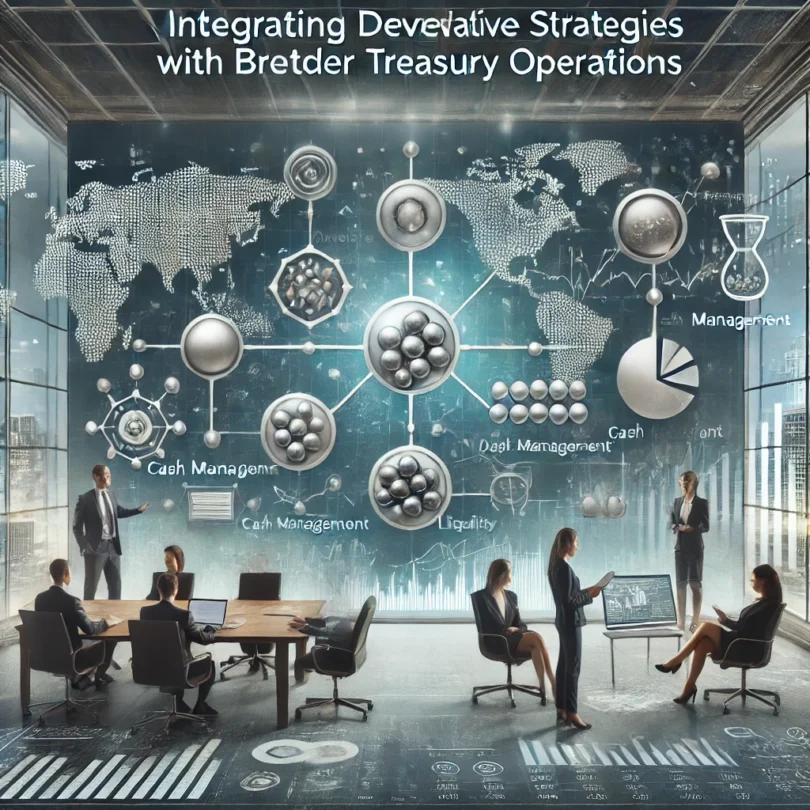Derivatives play a pivotal role in managing financial risks, but their true potential is realized when integrated with broader treasury operations. This chapter focuses on embedding derivative strategies into cash flow management, liquidity planning, and strategic decision-making.
- Linking Derivatives to Cash Flow Management
- Cash Flow Hedging
- Use derivatives to stabilize cash flows from foreign currency revenues, interest payments, or raw material costs.
- Example: A company hedges future Euro revenues with forwards to lock in predictable USD inflows.
- Cash Flow Forecast Integration
- Align hedging programs with rolling cash flow forecasts for dynamic adjustments.
- Example: Adjust hedging ratios monthly based on updated cash flow projections.
- Derivatives in Liquidity Management
- Interest Rate Swaps for Funding Stability
- Match debt servicing costs with cash flow availability using swaps.
- Example: Convert floating-rate debt to fixed-rate during periods of tightening monetary policy.
- Cross-Currency Swaps
- Manage funding in multiple currencies by swapping principal and interest payments.
- Example: A multinational uses swaps to secure lower borrowing costs in its home currency while funding operations abroad.
- Derivatives and Capital Structure Optimization
- Enhancing Debt Management
- Use derivatives to optimize the cost and composition of the debt portfolio.
- Example: A company uses interest rate caps to limit exposure to rising rates without fully converting to fixed-rate debt.
- Aligning with Investment Strategies
- Hedge investment risks to protect returns on capital deployment.
- Example: A fund manager uses equity options to mitigate downside risk in volatile markets.
- Collaboration Across Treasury Functions
- Centralized Treasury Operations
- Consolidate derivative management within a centralized treasury function for better oversight and coordination.
- Example: A global firm centralizes FX hedging to align with group-wide risk policies.
- Cross-Functional Collaboration
- Work with procurement, sales, and operations teams to identify exposures and refine hedging strategies.
- Example: Collaborate with procurement to hedge commodity price risks on key raw materials.
- Leveraging Technology for Integration
- Treasury Management Systems (TMS)
- Centralize tracking of derivative positions, valuations, and settlements.
- Example: Use TMS dashboards to monitor FX exposures alongside cash flow metrics.
- Enterprise Resource Planning (ERP) Integration
- Link derivative strategies to ERP systems for real-time alignment with financial operations.
- Example: Automatically update hedging requirements based on ERP-generated forecasts.
Conclusion
Integrating derivative strategies with broader treasury operations enhances efficiency, alignment, and decision-making across the organization. By connecting derivatives to cash flow management, liquidity planning, and capital structure optimization, treasury teams can achieve a cohesive approach to financial risk management.
Summary
These chapters outline advanced techniques and integration strategies for optimizing derivative use within treasury operations. Subsequent chapters will present case studies of successful implementations, explore emerging technologies like AI and blockchain in derivative management, and highlight future trends shaping financial risk management practices.






Leave a Comment
You must be logged in to post a comment.